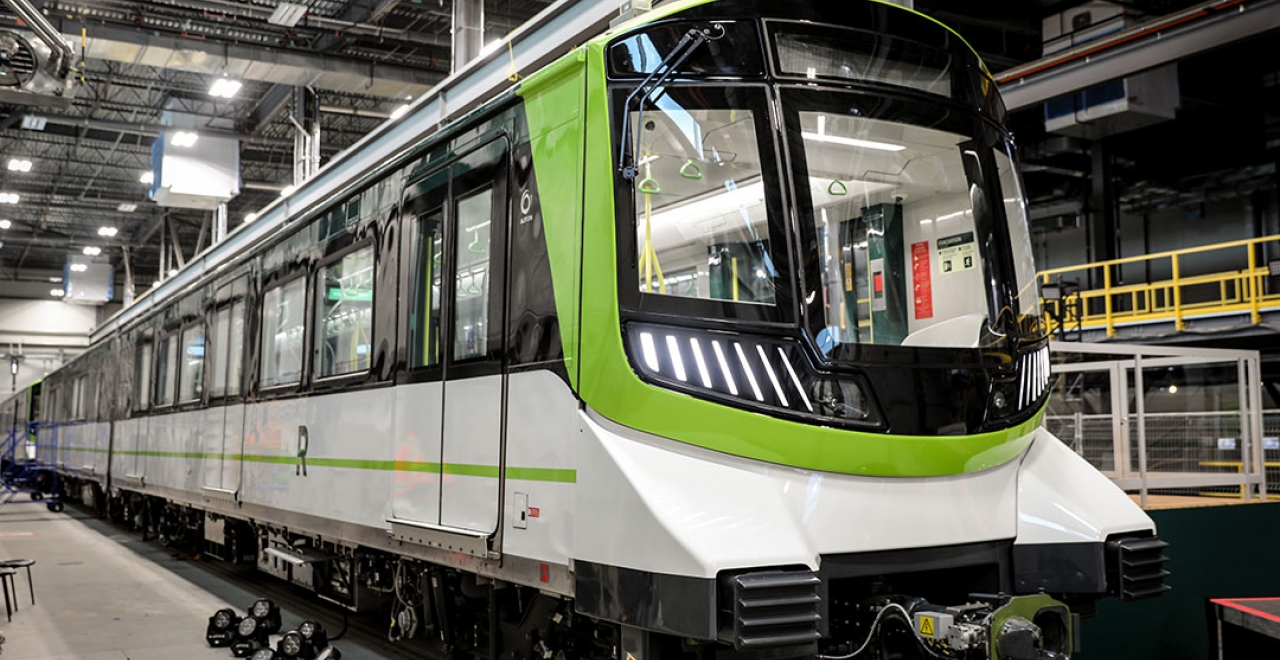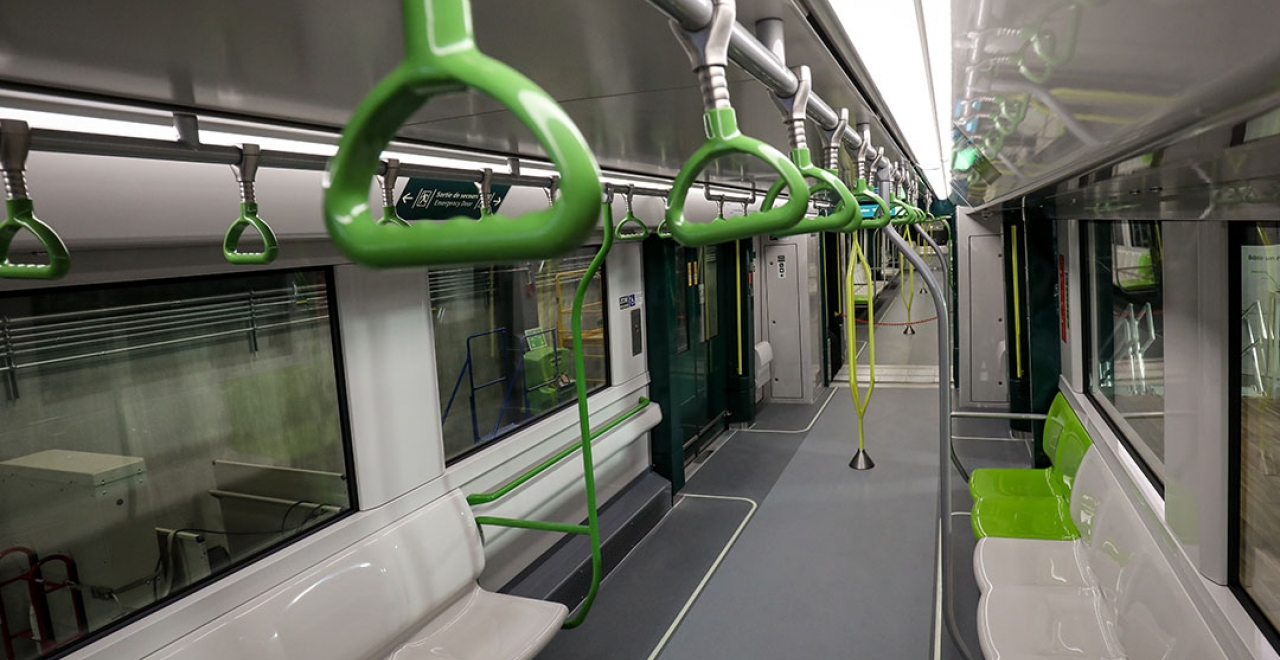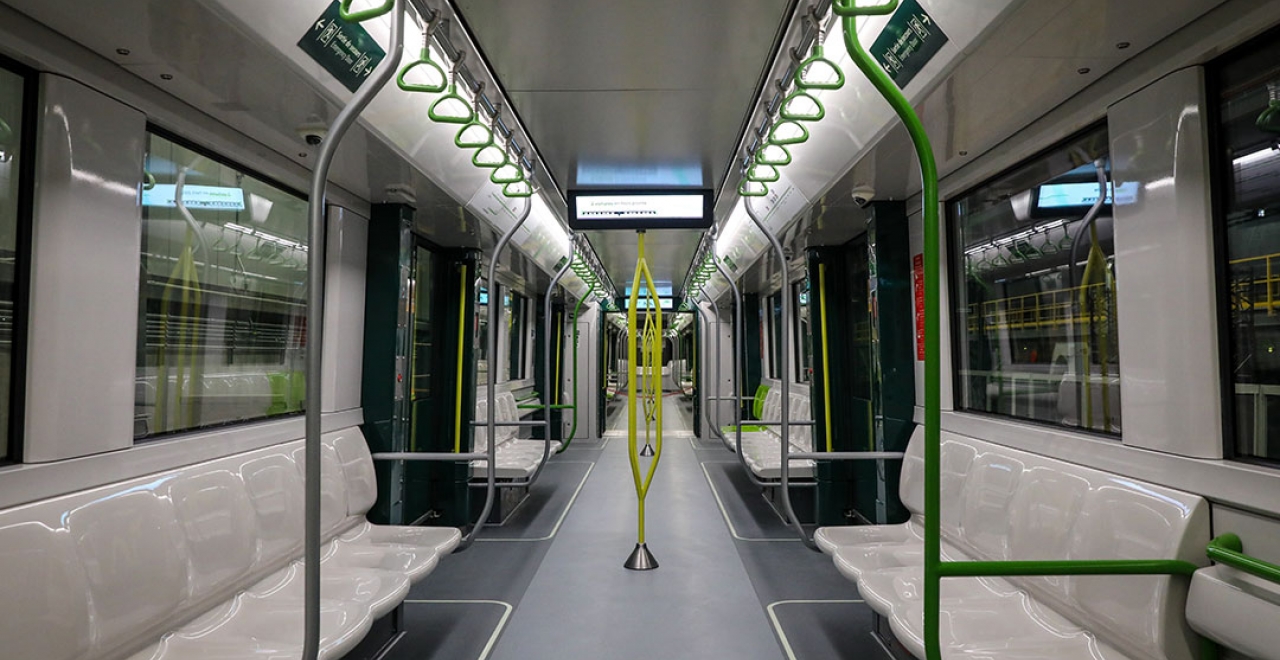afransen
Senior Member
Wouldn't catenary require larger tunnel bore?
Based on renderings, Metrolinx hints at catenary use for the Ontario Line. Make of that what you will.Wondering if the trains for the Ontario Line would be modelled on REM cars being manufactured for the Montréal new rapid transit line. Likely be high platform. The REM cars use overhead catenary, don't know if the Ontario Line will use catenary or third rail.
From link.



- Length: 76.20 m (250’) at peak hours
- Width: 2.94 m (9’8’’) or 17% wider than Azur cars
- Height: 3.90 m (12’10’’) excluding the pantograph
- Maximum weight: 232 tonnes
- Theoretical capacity: 600 passengers per car
- Maximum capacity: 780 passengers per car
- Seats: 128
- The average speed in motion will be 51 km/h.
Wouldn't catenary require larger tunnel bore?
A WIDE variety of electric traction systems are used on rapid transit systems around the world which have been built according to the type of railway, its location and the technology available at the time of installation.
Most metros are operated with dc power either at 750V with third rail or 1.5kV with third rail/overhead contact line. Operating metros on 25kV ac overhead is a relatively new phenomenon and there is a lot of debate about the value of this adaption due to the importance of traction power to a system’s performance.
A conventional electrification system provides electrical power to the trains by means of the traction power supply, distribution, and traction power return systems. Third rail always uses dc power with a variety of voltages in use around the world including 600V on the Tokyo metro, 750V, which is the most common use, 825V in Moscow, 1.2kV in Berlin and 1.5kV in Guangzhou.
Overhead traction has also evolved from 1.5kV dc, 3kV dc, and 15kV ac in early applications to 25kV ac (or 2x25kV ac) which is now widely used and more often than not the traction system of choice for new mainline and high-speed railways. High-voltage ac electrification has also been applied on S-Bahn systems in Germany (15kV) and on part of the RER network in Paris where mainline commuter lines have been connected with new underground sections in the city centre.
The fundamental difference between ac and dc is that on a dc network each substation includes transformers and rectifiers which condition the power to the relatively low voltage required for direct use by vehicle propulsion equipment. In ac systems the power is supplied by the substations directly without rectification. This necessitates further transformation onboard the rolling stock so the voltage is suitable for use by vehicle propulsion equipment.
Both systems offer distinct advantages and disadvantages, but with Delhi Metro using a 25kV ac rigid catenary system both above and below ground, which is encouraging other new metro projects in India to follow suit, it seems appropriate to consider what they might lose or gain by copying this example.
Increasing capacity
With demand for rapid transit services on the rise, operators are constantly looking to increase capacity and improve the efficiency of their networks. The norm for most metro line peak services is 30 trains per hour, or two-minute headways, although there are some examples where this is exceeded. For example Paris Metro Line 14’s headways are as low as 85 seconds.
In theory adopting a 25kV ac traction system could be one way of achieving greater capacity because it allows the operator to use longer trains more frequently. For mainline and high-speed railways 25kV ac is now the most proven and widely used system. It offers a number of advantages, including reducing the cost of power supply equipment, improving efficiency, and using energy from braking more effectively which are all potentially attractive features to metro operators. Power supply efficiency on a line equipped with 25kV ac overhead contact wire is also 98% although this may vary depending on rolling stock.
However, there are also several disadvantages of 25kV ac, particularly when applied in an urban metro environment. With the overhead contact line system more prone to failure, regular maintenance is necessary and requires a plan that is supported by a 24-hour maintenance team. The potential for electromagnetic interference and the impact of magnetic fields on properties and activities close to the line must also be considered, although special design features such as return conductors or booster transformers that minimise magnetic fields are now common.
Tunnel construction that is suitable for overhead catenary will also be significantly more expensive than for third rail because of the larger profile required. This is one of the major factors why metros have traditionally tended to favour third rail. In addition, because the onboard transformer imposes significant weight on the ac-powered rolling stock, metro operators have typically found that dc systems are better suited for urban applications where relatively short station spacing requires frequent and high acceleration.
On most third rail systems, the conductor rail is placed outside of the running rails and the electricity is transmitted to the train by means of a sliding shoe, which is held in contact with the rail. A third rail system offers a number of benefits, including:
• eradicating the impact of electromagnetic interference on electrical components
• reducing maintenance costs because power supply equipment is virtually maintenance-free with only regular inspections and cleaning required, and
• offering high efficiency – a 750V dc system offers a power supply transmission efficiency average of 92-94%.
As a solid composite rail running along the track, a third rail is more rugged than an overhead contact wire and has a longer life expectancy. The system similarly benefits from high reliability because it is fed on both sides by rectifiers from adjacent substations, and it can offer lower comparative initial costs than an ac system. Rolling stock used on these systems also tends to be cheaper because no transformers are installed onboard which also reduces the weight of the vehicles and increases capacity for passengers.
Inevitably there are a number of disadvantages with third rail, including unavoidable gaps in the power supply at points and level crossings. Speeds are also restricted to 160km/h due to the technical limitations of the system, while on lines electrified at 750V dc peak-time line capacity is limited to 60,000 passengers per hour per direction. Stray currents are also possible, although improvements in technology are managing and controlling this factor.
Some metros have found that adjusting voltages can mitigate some of the disadvantages of third rail traction, particularly its capacity limitations. As a result a number of new build projects, including Ahmadabad Metro, are considering electrifying at 1.5kV dc which is capable of carrying more than 60,000 passengers per hour per direction.
A study performed for Dubai Metro found that a 1.5kV dc third rail traction system can also cost up to 13% less than a 750V dc third rail system. One cost saving measure is the ability to locate fewer substations at greater intervals which reduces maintenance costs.
Typical substation spacing is roughly 1.5 – 2km for 750V dc systems, and 3 – 4km for 1.5kV dc systems although this distance is dependent on power demand, operating headways, system design, and land availability. Increasing the voltage can similarly result in a reduction in collector shoe maintenance costs, while stray currents, electromagnetic interference, and energy use are all reduced, and performance improves increasing peak-hour capacity.
While adjusting voltages and the type of traction system used can improve capacity on a metro system, it is the frequent station stops and terminal operations which are the major factors in determining line capacity and train headways. Even if the traction system is capable of handling the capacity required for longer trains, it is the length of the train itself which tends to increase headways to more than two minutes because of the time it takes to transfer from up track to down track at the end of the trip.
As a result reduced headways are only achievable on systems where shorter trains are used. Hence the benefit of providing greater per hour per direction capacity by using 25kV ac traction is lost in a practical application on a metro system. Introducing a communications-based signalling system could be one way of reducing headways for longer trains, although on underground lines ventilation and smoke control system regulations can restrict train length because they require a distance of 200-300m between trains to allow effective and safe air circulation.
It is within these parameters that one needs to look at the traction system applied and conclude what is the most suitable application.
Delhi Metro, which is using a 25kV ac overhead system and is recommending that other metros in India follow suit, has proposed shortening the length of trains that will be used on the third phase of its network to provide a headway of 1min 50s. While the traction system may be able to cater for more than 60,000 passengers per hour per direction under this plan, the system as a whole will not support higher capacity due to the shorter train lengths required to achieve lower headways.
As we have found, a 750V dc third rail system regularly caters for a six-car metro train operating at two-minute headways. Planners would therefore be wise to consider all of the options available with respect to the specific demands of their system when designing new metros, and not to dismiss what some might consider as old fashioned third rail systems. In some instances the efficiency savings that these systems offer could be of greater value than the promise of increased capacity provided by overhead traction.
How likely is it that Metrolinx purchases the exact same trains as REM?
Presumably rolling stock choice would be up to the bidder.How likely is it that Metrolinx purchases the exact same trains as REM?
How likely is it that Metrolinx purchases the exact same trains as REM?
Wondering if the trains for the Ontario Line would be modelled on REM cars being manufactured for the Montréal new rapid transit line. Likely be high platform. The REM cars use overhead catenary, don't know if the Ontario Line will use catenary or third rail.
From link.



- Length: 76.20 m (250’) at peak hours
- Width: 2.94 m (9’8’’) or 17% wider than Azur cars
- Height: 3.90 m (12’10’’) excluding the pantograph
- Maximum weight: 232 tonnes
- Theoretical capacity: 600 passengers per car
- Maximum capacity: 780 passengers per car
- Seats: 128
- The average speed in motion will be 51 km/h.
Please no perimeter seating for the Ontario Line. No plastic seating, please, prefer the fabric (could be different colours or patterns, though).
The TTC vehicles (including seats) are cleaned several times a day.Every station, bus, streetcar, Wheel-Trans vehicle and train is receiving extra attention multiple times a day, on a daily basis.
I think the REM has a lot of sections that were formerly heavy rail lines that may not be continuously fenced, so third rail would not have been safe.
For Ontario Line, you'd think the short at-grade sections could be fenced for third rail.